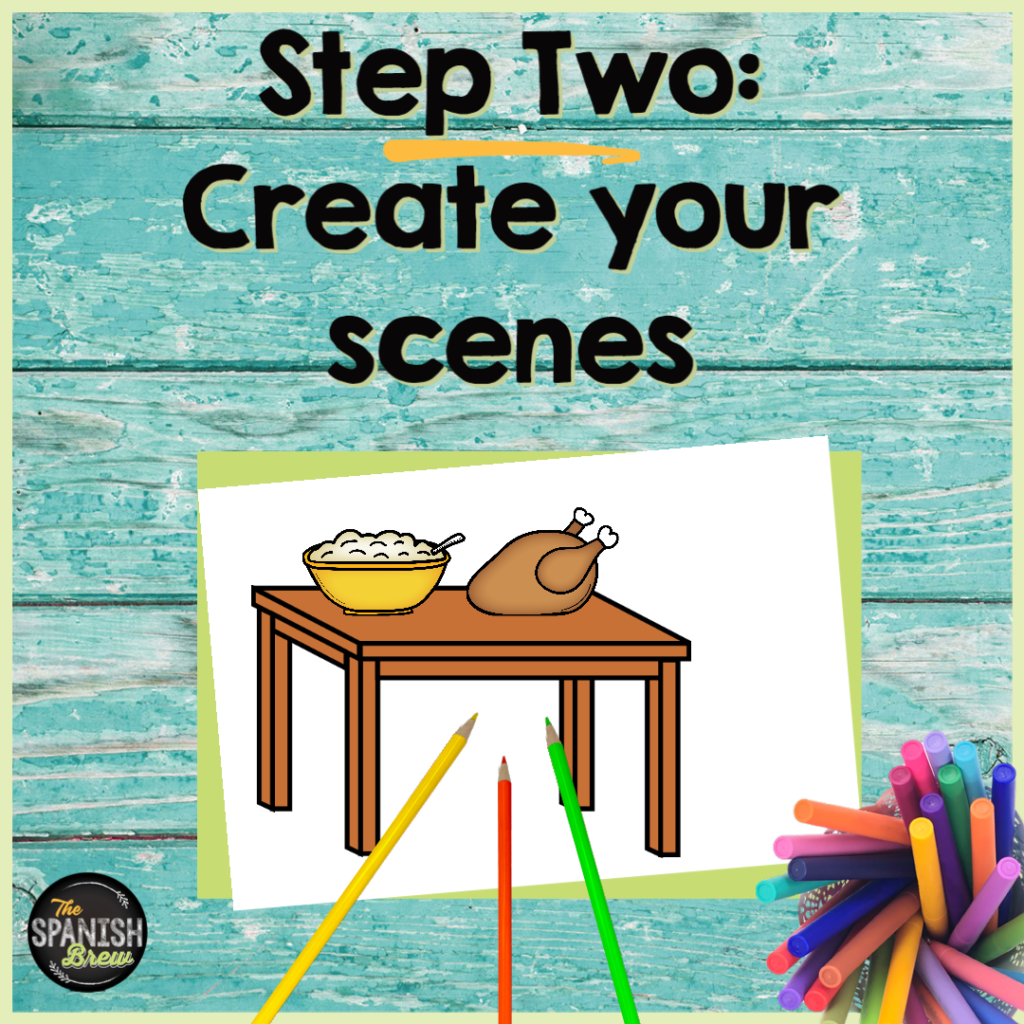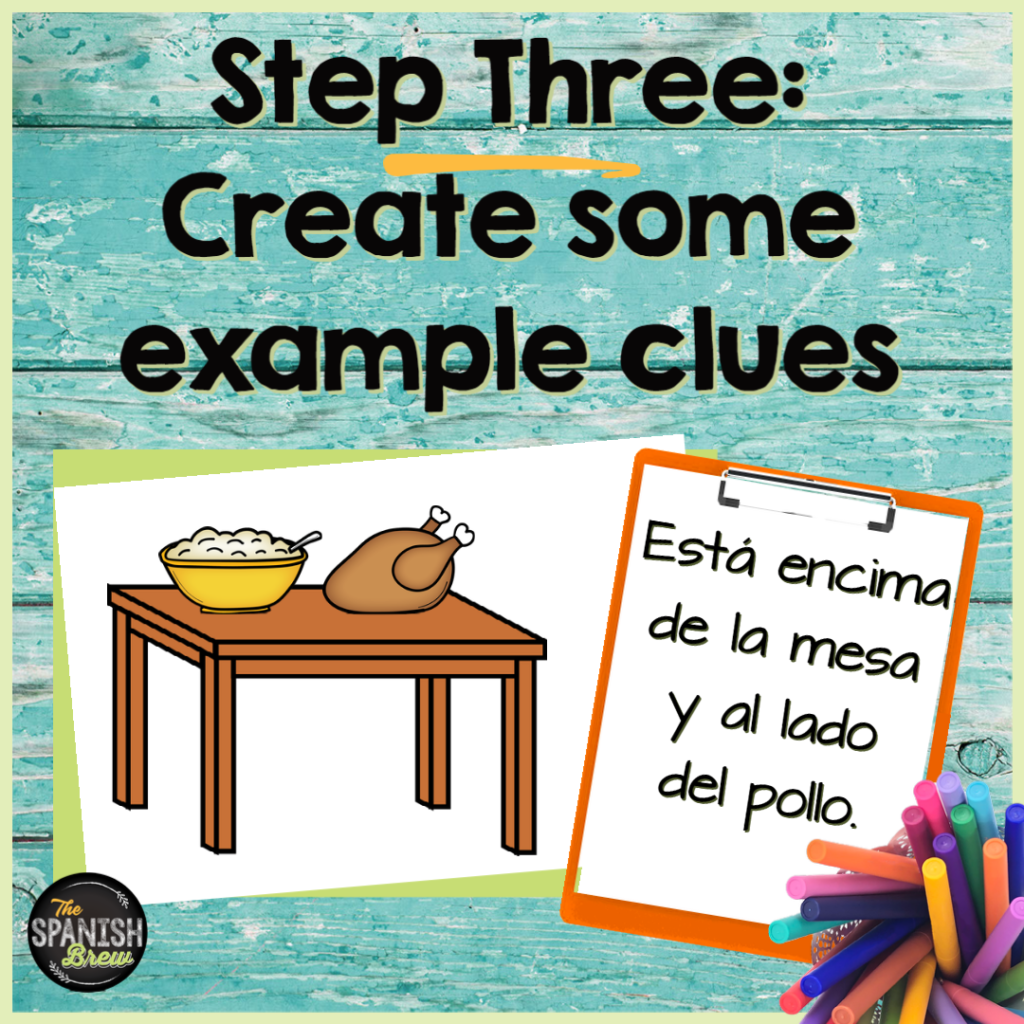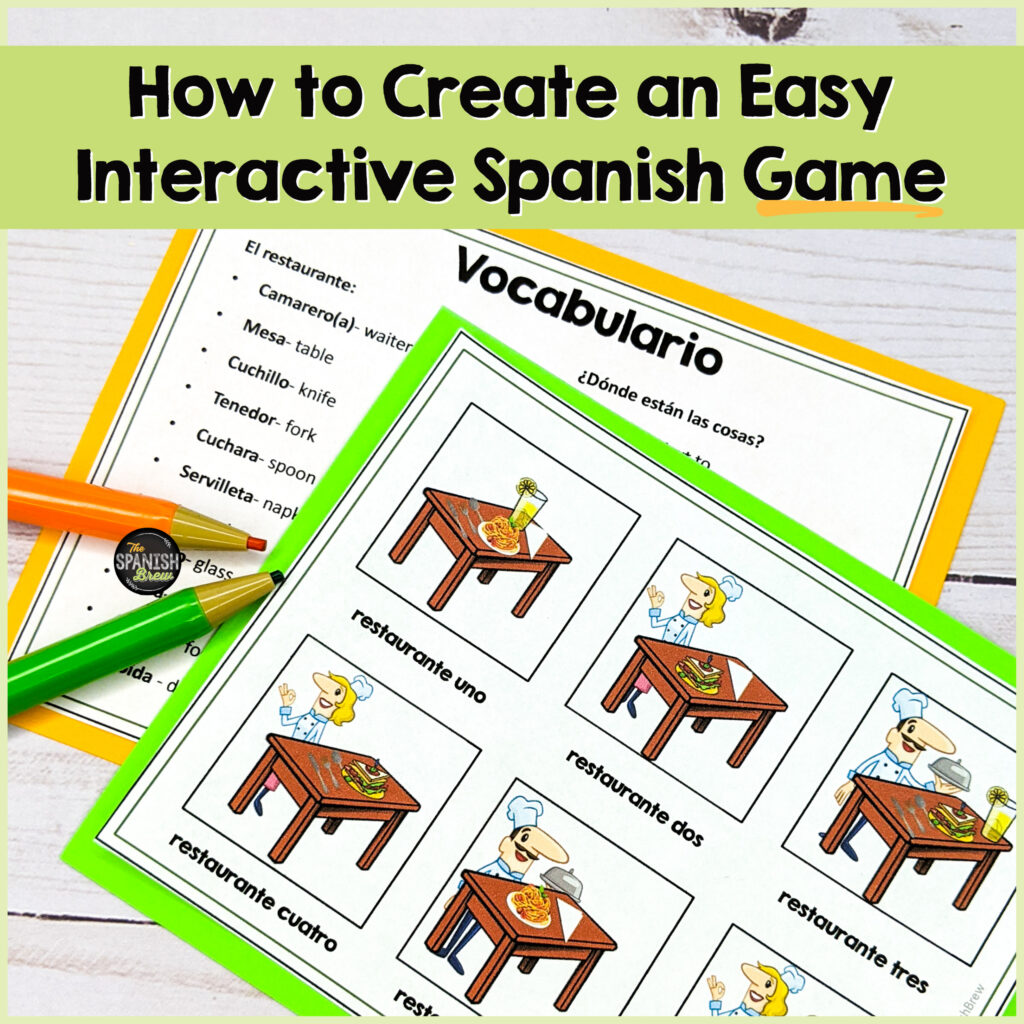Do your Spanish students love playing games? Do they especially love guessing games? Then they will love playing ¿Qué ves? Students work with a partner and try to guess which scene their partner is describing like “I spy.” This is wonderful way of practicing prepositions. You can include a wide variety of topics like food, family, house, bedroom, classroom and more! Curious how to make this game for your class? Read on!
Step One: Pick a topic

I love using this game because I can modify it to any topic or chapter that we are covering. Think about the type of vocabulary words that you want your students to practice. Some examples might include the classroom, food, family, vacations, and sports.
Step Two: Create your scenes

Create a scene with a variety of images that students will have to guess. You can draw them or use clipart. For example, a table with a variety of food. Create five or six different tables with slightly different items on the table or in different places. Your scenes should be very similar with only a few differences so that it keeps your students guessing.
Step Three: Create some example clues

Project the different scenes to the class or pass them out to each student. Then give them some clues out loud and let them guess which scene you are describing. They can raise their hand or answer on an electronic device when they think they know the right answer. After a few examples your students will understand how the game is played. Then you can let them play with a partner. Have some competitive students? Have them keep track of how many clues they need before they can guess the correct scene.
Ideas for follow up activities:
- Students choose one scene and write a variety of clues about that scene. They can do this in bullet points or as a paragraph. This is an easy way to assess their writing.
- Have an artistic student in your class? Give them a blank canvas and let them draw the scenes for their classmates to describe. This is a great way to build relationships with those creative students and show off their skills.
- Students record themselves describing one of the scenes out loud. They can post their video to a shared platform like Flipgrid or Google classroom.
I love using these games in class because it gives my students the opportunity to speak with one another in the target language. Then as a follow-up to activity they can write their own clues to demonstrate their understanding. (Veteran teacher tip… collect their clues and save them so you have a nice bank of practice questions for an assessment or the following school year.) Have you created any games like this in your classroom? I would love to hear all about your experience! Connect with me on Instagram or Facebook and tell me about your experience.





No Comments